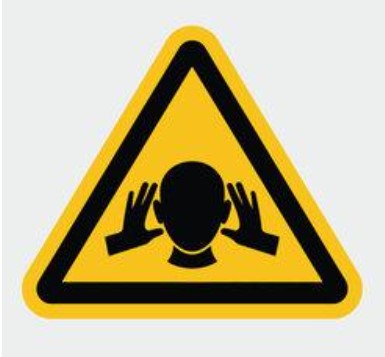Introduction
In the modern workplace, safety protocols often focus on visible hazards like chemicals, moving machinery, or fire risks. Yet, one of the most damaging threats to worker health is something you cannot see: noise hazards. Often referred to as the “silent threat”, excessive noise gradually affects hearing, causes stress, and lowers productivity.
According to the World Health Organization (WHO), nearly 16% of disabling hearing loss in adults is due to occupational noise exposure. This means millions of workers worldwide suffer from preventable hearing damage caused by exposure to loud, persistent noise in the workplace.
Many workplaces fail to recognize the long-term health consequences of noise hazards, and without proper precautions, employees are at risk of permanent damage. Addressing this issue requires understanding the risks and taking proactive steps to reduce exposure.
What Counts as a Noise Hazard?
Noise becomes a hazard when its intensity (measured in decibels, dB) or duration exceeds safe exposure limits. The Occupational Safety and Health Administration (OSHA) has set the permissible exposure limit (PEL) for noise at 85 dB over an 8-hour period.
Common Noise Levels
A normal conversation: 60 dB (considered safe)
Busy traffic: 85 dB (threshold for action)
Chainsaw: 110 dB (high risk)
Jet engine: 140 dB (extremely dangerous)
Excessive and repeated exposure to noise levels above the PEL can cause permanent hearing damage. The higher the decibel level and the longer the exposure, the greater the risk of Noise-Induced Hearing Loss (NIHL).
Duration vs. Intensity
It’s important to note that noise doesn’t just become dangerous because it’s loud. Long-term exposure to even moderate levels of noise (e.g., 85 dB) can cause damage over time, while sudden bursts of high-intensity sound (e.g., 120 dB) can cause immediate hearing damage.
Industries Most at Risk
Certain industries and environments are particularly prone to noise hazards due to the machinery, tools, and operational conditions that produce loud, sustained noise. Some industries at higher risk include:
1. Construction
Jackhammers, bulldozers, drills, and other heavy construction equipment often exceed the safe noise limits. In construction sites, workers are regularly exposed to 90–120 dB noise levels, leading to a high risk of hearing loss and communication difficulties.
2. Manufacturing
Presses, conveyor belts, and packaging lines in manufacturing plants create constant mechanical noise, regularly exceeding 85 dB. This noise can disrupt communication, increase stress levels, and affect workers’ ability to concentrate on tasks.
3. Mining
Drills, blasting, and heavy machinery in mining operations produce noise levels that can reach upwards of 100 dB. Miners who work in these environments without adequate protection are vulnerable to both immediate hearing damage and chronic hearing loss.
4. Transport
Airports, railways, and shipyards expose workers to high-intensity noise from aircraft engines, trains, and shipping machinery. These environments regularly exceed 85 dB, putting workers at risk for hearing loss and mental fatigue.
5. Entertainment
Concert venues, nightclubs, and music festivals are prime examples of environments where loud music and amplified sound systems often push noise levels beyond the safe limit. Workers in these venues, such as sound engineers and performers, are at high risk for hearing damage.
Effects on Workers
Excessive noise exposure doesn’t just affect hearing; it has a range of physical and mental health impacts. These include:
1. Tinnitus
Tinnitus, characterized by ringing, buzzing, or humming in the ears, is often the first sign of noise-induced hearing damage. This condition can disrupt sleep, reduce concentration, and cause stress.
2. Mental Fatigue and Stress
Continuous exposure to loud environments leads to mental fatigue and stress. Noise can trigger the body’s stress response, elevating cortisol levels and leading to increased irritability and lowered productivity.
3. Communication Difficulties
High levels of noise make verbal communication difficult. In environments such as factories, construction sites, and airports, employees may struggle to hear safety instructions, warnings, or even each other, leading to errors and accidents.
4. Increased Blood Pressure
Noise exposure has been linked to increased blood pressure and other cardiovascular issues. Over time, exposure to high noise levels can lead to chronic health problems, including hypertension and heart disease.
5. Reduced Work Performance
When workers are constantly exposed to noise, their ability to focus diminishes, resulting in lower work performance. Studies show that noise distractions can significantly slow down tasks, reduce efficiency, and increase the likelihood of mistakes.
Prevention Strategies
Noise hazards are preventable with the right controls. The best approach combines engineering solutions, administrative controls, and personal protective equipment (PPE). Here’s how employers can protect workers from noise-related health issues:
1. Engineering Controls
Install soundproofing materials like acoustic panels and curtains to reduce noise transmission.
Use quieter machinery and equipment, where possible, to minimize noise generation at the source.
Create physical barriers between noisy and quiet areas, such as office spaces or break rooms.
2. Administrative Controls
Rotate workers to limit the amount of time they spend in noisy environments.
Schedule noisy tasks during off-hours or less populated times to minimize exposure for all employees.
Enforce quiet zones where workers can take breaks away from high noise levels, allowing their ears to rest.
3. Personal Protective Equipment (PPE)
Provide earplugs or earmuffs for workers exposed to noise levels above 85 dB.
Ensure that PPE is comfortable and fits well to encourage regular use and proper protection.
Use combination protection (earplugs and earmuffs) in areas where noise exceeds 100 dB.
4. Education and Training
Train workers to recognize noise hazards and the importance of using hearing protection correctly.
Offer regular training on how noise exposure affects hearing and overall health.
Encourage early reporting of hearing symptoms like tinnitus or difficulty hearing.
Conclusion
Noise hazards may not cause immediate injuries, but their long-term effects can be just as damaging, if not more. The risk of Noise-Induced Hearing Loss and other health complications is real and growing in many industries.
Employers who actively manage noise exposure not only protect workers’ hearing but also improve productivity, morale, and overall workplace safety. By implementing OSHA-compliant noise control programs, investing in PPE, and fostering a culture of awareness and prevention, companies can create a healthier, safer, and more efficient workplace for everyone.
Protecting your hearing today means ensuring long-term health tomorrow—both for employees and businesses alike.


